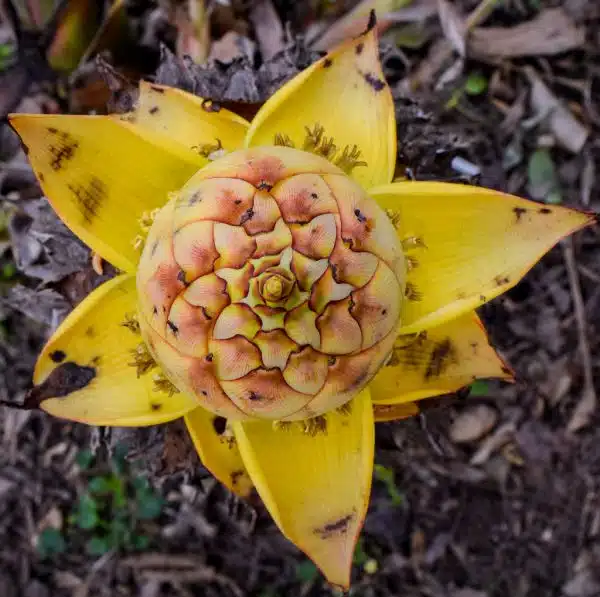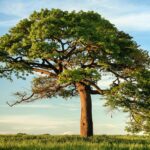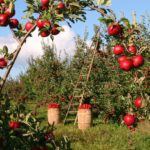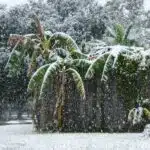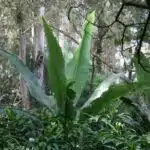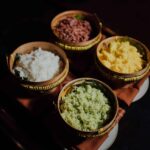Growing and caring for Chinese dwarf banana trees can be a rewarding experience for both beginner and experienced gardeners alike. These tropical plants are known for their unique beauty, with vibrant green leaves and striking yellow flowers that can brighten up any space. In addition to their aesthetic appeal, Chinese dwarf banana trees also offer a bountiful harvest of sweet, delicious fruit that can be enjoyed by the whole family.
To successfully grow and care for Chinese dwarf banana trees, it is important to understand the specific needs of these plants. From selecting the right location and soil type to providing proper watering and fertilization, every aspect of cultivation plays a crucial role in ensuring healthy growth and maximum fruit yield. With this guide, you will learn everything you need to know about growing and caring for Chinese dwarf banana trees, so you can enjoy the fruits of your labor all year round.
Understanding The Chinese Dwarf Banana Tree
The Chinese Dwarf Banana Tree, also known as Musa Acuminata or Cavendish banana, is a popular ornamental plant that can be grown both indoors and outdoors. This tropical plant is native to Southeast Asia and can reach up to six feet in height. It produces small, sweet bananas that are about four inches long.
Propagation methods for the Chinese Dwarf Banana Tree include dividing suckers from the mother plant or germinating seeds. Dividing suckers is the most common method and should be done when the plant has matured enough to produce them. Germinating seeds require more patience as they take longer to grow into a mature plant.
The nutritional requirements of the Chinese Dwarf Banana Tree include regular fertilization with a balanced fertilizer that contains nitrogen, phosphorus, and potassium. It is important to note that over-fertilization can damage the roots of the tree. Watering should be done regularly but not excessively as this can cause root rot. Overall, understanding the nutritional needs of your tree is crucial for its development and fruit production.
To ensure proper growth and development of your Chinese Dwarf Banana Tree, it is important to choose the right location for it. The subsequent section will delve into factors you should consider when choosing an ideal spot for your tree such as sunlight requirements and soil conditions.
Choosing The Right Location For Your Tree
While the Chinese Dwarf Banana tree is a relatively easy plant to grow, choosing the right location for it is critical. One common misconception about this type of banana tree is that it requires direct sunlight throughout the day. While they do require sun exposure, too much direct sunlight can actually damage the leaves and hinder growth. Therefore, it’s important to choose a location that provides partial shade during the hottest parts of the day.
Another key factor in selecting a location for your Chinese Dwarf Banana tree is ensuring proper drainage. These trees thrive in moist soil but cannot tolerate standing water around their roots. Choose an area with well-draining soil or consider adding gravel or sand to improve drainage around the base of the tree.
Soil pH and wind protection are also important considerations when choosing a location for your Chinese Dwarf Banana tree. This particular species prefers slightly acidic soil with a pH level between 5.5 and 6.5. Additionally, these trees are susceptible to wind damage, so choose a location that is protected from strong gusts or consider using stakes or other support structures to keep your tree upright and healthy.
Moving forward, preparing the soil for optimal growth is crucial in ensuring your Chinese Dwarf Banana tree thrives in its new location.
Preparing The Soil For Optimal Growth
Effective soil preparation is essential for the optimal growth of Chinese dwarf banana trees. Soil that is rich in nutrients, well-draining and moisture-retentive is ideal for these plants. Before planting, it is important to ensure that the soil has the necessary structure and composition to support healthy growth. This can be achieved by incorporating organic matter into the soil through composting.
Composting tips are crucial in preparing the soil for Chinese dwarf banana trees. Composting involves breaking down organic matter such as kitchen scraps, leaves, and grass clippings into a nutrient-rich humus. The resulting compost can then be added to the soil to improve its structure, increase its water-holding capacity, and provide essential nutrients for plant growth. To make good quality compost, it is important to maintain a balance between green (nitrogen-rich) and brown (carbon-rich) materials in a compost bin or pile.
Mulching techniques also play a vital role in preparing soil for Chinese dwarf banana trees. Mulch acts as a protective layer on top of the soil, helping to retain moisture and suppress weed growth while preventing erosion from wind and water. Organic mulches such as straw, leaves, or wood chips are ideal for this purpose as they provide additional nutrients over time as they decompose. Proper mulching techniques involve spreading a layer of organic material evenly around the base of each tree while being careful not to cover up any low branches or trunk flares.
Moving forward into planting your Chinese dwarf banana tree requires proper preparation of your chosen area’s soil with composting tips and mulching techniques previously mentioned. By doing so, you have set your plant up for success by providing it with all necessary components needed for optimal growth.
Planting Your Chinese Dwarf Banana Tree
After preparing the soil, it’s time to plant your Chinese Dwarf Banana Tree. Container gardening is an excellent option for those who don’t have a lot of yard space or want to grow indoors. Make sure you choose a container that is at least 5 gallons in size and has drainage holes. Fill the container with well-draining potting mix, leaving enough space at the top for watering.
Companion planting can also be beneficial when growing Chinese Dwarf Banana Trees. Some great companion plants include marigolds, basil, and garlic. These plants can help deter pests and attract beneficial insects while also providing additional nutrients to the soil. Just make sure not to overcrowd your container as this can lead to competition for resources.
Now that your tree is planted, it’s important to properly care for it by watering and fertilizing regularly. Water your tree when the top inch of soil feels dry but avoid overwatering as this can lead to root rot. Fertilize every two weeks during the growing season with a balanced fertilizer high in potassium and phosphorus. With proper care, your Chinese Dwarf Banana Tree will thrive and produce delicious fruit for years to come.
Watering And Fertilizing Your Tree
Watering techniques for Chinese dwarf banana trees are crucial to their growth and health. These trees need a consistent supply of water, but over-watering can harm them. The soil should be moist but not soggy, and the tree should never be allowed to stand in water.
To ensure adequate moisture levels, it is recommended to water your tree thoroughly once a week. However, during hot and dry weather conditions or if the soil feels dry to the touch, watering may be required more frequently. It is important to note that the amount of water required will vary depending on factors such as tree size, location, and climate. Therefore, it is essential to monitor your tree’s moisture levels regularly.
Nutrient requirements for Chinese dwarf banana trees can be met through fertilization. Fertilizers containing high amounts of nitrogen are recommended for these trees. Nitrogen promotes leaf growth and helps maintain the plant’s lush green coloration. However, over-fertilizing can cause damage to the roots and foliage of the tree. As such, it is important to follow manufacturer instructions when applying fertilizer and not exceed recommended rates.
Markdown list:
- Water your Chinese dwarf banana tree thoroughly once a week
- Monitor moisture levels regularly
- Avoid over-watering or allowing the tree to stand in water
- Use fertilizers with high nitrogen content in moderation
As you continue caring for your Chinese dwarf banana tree, pruning and trimming may become necessary for healthy growth.
Pruning And Trimming For Healthy Growth
After properly fertilizing and watering your Chinese dwarf banana tree, it is important to apply pruning techniques and trimming frequency for healthy growth. Pruning can help shape the tree, encourage new growth, and remove any damaged or diseased parts. It is best to start pruning in the early spring before new growth appears.
When pruning, make sure to use sharp, sterilized tools to prevent the spread of disease. Cut off any dead, yellowing or damaged leaves by snipping them at the base with a pair of scissors. Also, remove any suckers that appear at the base of the plant as they can take away nutrients from the main stem.
Trimming frequency depends on how fast your tree grows. If it’s growing quickly, you may need to trim more often to maintain its shape. However, if you notice that your tree has stopped growing or has started to produce fruit, it’s best not to trim as this could affect its overall productivity. By following these pruning guidelines and adjusting trimming frequency according to your tree’s growth rate, you’ll be able to promote healthy growth and ensure a bountiful harvest in no time.
To protect your Chinese dwarf banana tree from pests and diseases, it is crucial to practice good sanitation methods such as removing fallen leaves and debris promptly. Additionally, inspect your plant regularly for signs of infestation or infection such as discolored leaves or tiny insects on the foliage. If you do detect an issue early on, treat it immediately with appropriate insecticides or fungicides approved for use on edible plants. With proper care and attention including pruning techniques and trimming frequency maintenance along with vigilant pest control practices you will be rewarded with a thriving plant that produces delicious bananas year after year.
Protecting Your Tree From Pests And Diseases
Although Chinese Dwarf Banana trees are generally hardy, they are still susceptible to pests and diseases. These unwanted invaders can wreak havoc on the health of your tree and cause severe damage if left unchecked. It is essential to protect your tree from these threats so that it can continue to thrive and produce healthy fruit.
One effective way of protecting your tree is by using natural remedies. Neem oil, for instance, has potent antifungal and antibacterial properties that can help keep pests at bay. You can also use garlic spray or chili pepper powder mixed with water to create a natural insecticide that won’t harm beneficial insects like bees or butterflies. If you prefer chemical solutions, there are many commercial insecticides available that target specific pests and diseases. Be sure to follow the manufacturer’s instructions carefully when using these products.
Another crucial step in protecting your tree is maintaining good hygiene practices. Remove any fallen leaves or debris from around the base of your tree regularly. This will prevent fungal spores and bacteria from spreading and infecting your plant. Also, be sure to prune any damaged or diseased branches as soon as possible to prevent further spread.
In summary, protecting your Chinese Dwarf Banana tree from pests and diseases is critical for its long-term health and fruit production. Using natural remedies or chemical solutions, maintaining good hygiene practices, and promptly addressing any issues that arise will help ensure a healthy tree. In the next section, we’ll discuss how to harvest and enjoy your fruit once it’s ready!
Harvesting And Enjoying Your Fruit
Protecting your Chinese dwarf banana tree from pests and diseases is crucial for a healthy and fruitful harvest. However, once you have successfully protected your tree, it’s time to enjoy the fruits of your labor. Harvesting your bananas at the right time is essential to ensure that they are ripe and ready to eat.
Once you’ve harvested your bananas, you may find yourself with an excess of fruit. To preserve your fruit, consider freezing them for later use in smoothies or baked goods. You can also dehydrate them for a healthy snack or create banana chips. Additionally, try creating banana themed recipes such as banana bread or pancakes for a delicious treat.
Harvesting and enjoying your fruit is only one aspect of caring for your Chinese dwarf banana tree. Overwintering your tree is also important to ensure its longevity. In the next section, we will discuss how to properly overwinter your tree so that it can continue to produce fruit year after year.
Overwintering Your Chinese Dwarf Banana Tree
Chinese dwarf banana trees are tropical plants and need to be protected during the winter months. Proper winter care is essential if you want your tree to thrive year after year. The first step in overwintering your Chinese dwarf banana tree is to bring it inside before the temperature drops below 50°F.
Once inside, find a location that provides enough light and warmth for the tree to survive the winter. A south-facing window or a room with supplemental lighting can provide sufficient light for the plant. Additionally, make sure the temperature requirements for your Chinese dwarf banana tree are met. It needs to be kept at a consistent temperature between 60-80°F to prevent it from going dormant.
To ensure that your Chinese dwarf banana tree thrives throughout the winter, follow these three tips:
- Keep humidity levels high by misting the leaves every few days or placing a tray of water near the tree.
- Water sparingly but regularly as overwatering can lead to root rot.
- Fertilize once every six weeks with a balanced fertilizer to promote healthy growth.
By providing proper winter care for your Chinese dwarf banana tree, you can enjoy its lush foliage year-round without having to worry about any damage caused by cold temperatures.
Transition into troubleshooting common issues: While taking care of your Chinese dwarf banana tree during the winter months, there may be some problems that arise despite following all recommended steps. It is important to understand and identify these issues in order to effectively troubleshoot them and keep your plant healthy and thriving.
Troubleshooting Common Issues
As you prepare to care for your Chinese dwarf banana tree, it is essential to be aware of some common pests that can attack them. Pests such as aphids, spider mites, and mealybugs can cause significant damage to the leaves of your tree. Be sure to inspect your plant regularly and treat any pest infestations promptly. You can use organic insecticidal soap or neem oil to control these pests.
Another aspect that you must pay attention to when caring for your Chinese dwarf banana tree is nutrient deficiencies. These trees need enough nutrients to grow strong and healthy. If you notice yellowing leaves or slow growth, it may be a sign of nutrient deficiency in the soil. Ensure that the soil has enough nitrogen, potassium, and phosphorus by using fertilizer rich in these nutrients.
If despite all precautions taken, you still experience issues with your Chinese dwarf banana tree, don’t worry; there are solutions available. Refer to the table below for guidance on identifying common pests and nutrient deficiencies associated with this type of plant.
| Common Pests | Nutrient Deficiencies |
|---|---|
| Aphids | Yellowing Leaves |
| Spider Mites | Stunted Growth |
| Mealybugs | Poor Fruit Development |
By being vigilant about pests and maintaining proper nutrition levels for your plant, you can help ensure its health and longevity. Remember that prevention is always better than cure when dealing with any potential issues with your Chinese dwarf banana tree. With proper care, this beautiful plant will bring joy and beauty into your home or garden for years to come!
Conclusion
The Chinese Dwarf Banana Tree is a beautiful addition to any garden, with its lush green leaves and delicious fruit. By understanding the needs of this tree, you can cultivate a healthy and bountiful harvest. Choosing the right location for your tree is vital, as it needs full sun exposure and protection from wind. Preparing the soil with organic matter will provide optimal growth conditions for your tree.
Once planted, proper watering and fertilizing are necessary to ensure healthy growth. Protecting your tree from pests and diseases will keep it thriving for years to come. When it’s time to harvest, enjoy the sweet fruit that your tree has produced.
Overwintering can be tricky but not impossible; following the proper steps will ensure your tree survives through cold temperatures. If issues arise, troubleshooting common problems such as yellowing leaves or wilting will keep your tree healthy.
In conclusion, growing and caring for a Chinese Dwarf Banana Tree requires dedication and care, but the rewards are plentiful. As horticultural specialists, we encourage you to embrace the process of cultivating this beautiful plant in your garden. By doing so, you’ll not only have a fruitful harvest but also experience the joy that comes with nurturing nature’s beauty.
Image Credits
- “Musella lasiocarpa (Golden Lotus Banana, Chinese Dwarf Banana)” by Gwendolyn Stansbury (featured)

